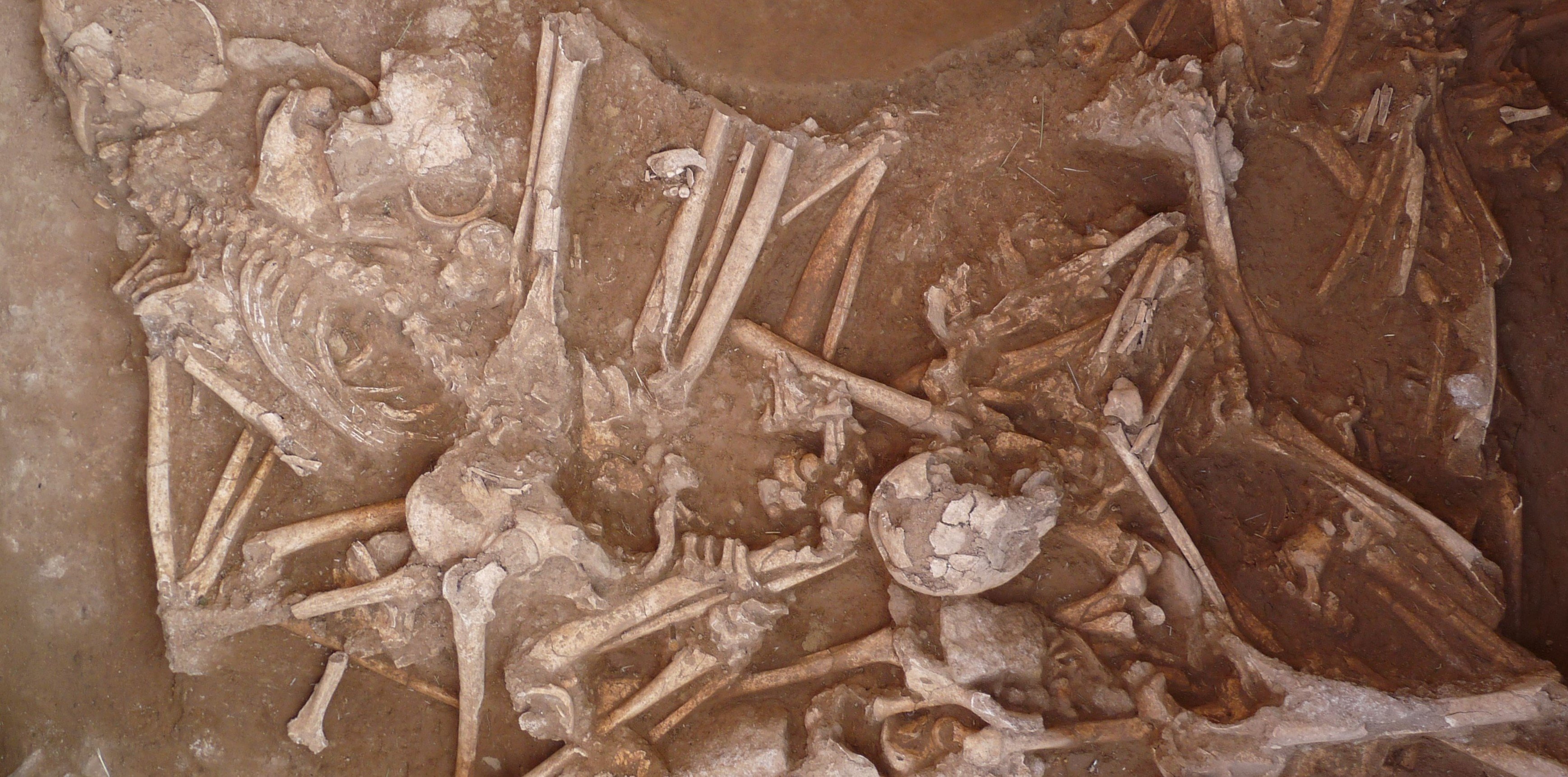Institut de Biologia Evolutiva - CSIC UPF
The first European farmers admixed with the local hunters for 3,000 years
The largest paleogenetic study carried out to date, published in Nature, clarifies the Neolithisation of the European continent. Carles Lalueza-Fox, investigator from the IBE, has participated in this research, in which 180 genomes from Hungary, Germany and Spain, between 4,000 and 8,000 years old, have been recuperated
 The change from the hunter-gatherer lifestyle to the farmer’s is the biggest demographic transition the human being has gone through in millions of years. Agriculture aroused in the Middle East around ten thousand years ago, and it expanded towards Europe later on. There, in a few thousand years, succeeded in replacing the Mesolithic hunters ―the first Mesolithic genome, that of the man of La Braña, in León (Spain), was sequenced less than three years ago. Despite it was already known that both groups were genetically different, the local dynamics of the aforementioned substitution process were until now little known.
The change from the hunter-gatherer lifestyle to the farmer’s is the biggest demographic transition the human being has gone through in millions of years. Agriculture aroused in the Middle East around ten thousand years ago, and it expanded towards Europe later on. There, in a few thousand years, succeeded in replacing the Mesolithic hunters ―the first Mesolithic genome, that of the man of La Braña, in León (Spain), was sequenced less than three years ago. Despite it was already known that both groups were genetically different, the local dynamics of the aforementioned substitution process were until now little known.
A team of researchers of the Spanish National Research Council (CSIC) has succeeded in sequencing the DNA of several antique samples from three European regions, Hungary, Germany and Spain. “Thanks to this DNA sequencing we found out that following their arrival, the first farmers admixed with the local hunters for several centuries”, tells Carles Lalueza-Fox, investigator from the IBE, who has participated in the research. “That is, the genomes of the Middle and the Final Neolithic, as well as the Calcolithic in the Iberian peninsula, have nearly 25% of the genetic component from the hunters related to La Braña, while those of central Europe show similarities with hunters from these regions”, he adds.
In some cases, especially in central Europe, individuals with mixed ancestralities are found. Among these individuals there were hunters that settled in agricultural communities, where they were finally buried. “Such a discovery”, Lalueza-Fox points out, “draws a more complex scenario on the Neolithisation process than it existed up to now; this cannot be therefore considered only a farmers migration nor a uniform demographic process”.
The analysis of more individuals from the prehistory of the Iberian peninsula will help complete this scenario and understand the genomic changes that took place after the arrival of metals, and even with the migrations that happened in historic times. According to Lalueza-Fox, «we currently have nearly 400 ancient Iberian genomes from all regions and periods, from the Mesolithic until the middle age, that keep showing posterior genetic changes; they will be correlated to archaeological changes».
Genomic data from 38 Spanish samples, 17 out of which had never reported before, were used in this research. These samples came from archaeological sites of Burgos and Alava. The collaborators of the study are the archaeologists Carmen Alonso Fernández and Javier Jiménez Echevarría, from Burgos, and the Basque archaeologists Javier Fernández-Eraso and José Antonio Mujica-Alustiza. The director of the research is David Reich, from the Harvard Medical School of Boston; Mark Lipson and Anna Szécsényi-Nagi are the first authors.
Reference article: Parallel palaeogenomic transects reveal complex genetic history of early European farmers. Nature. doi:10.1038/nature24476
